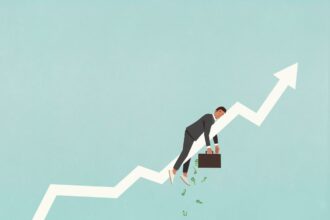Most economists who had to describe healthy, stable growth would end up largely describing today’s GDP numbers. The economy expanded at an annual inflation-adjusted rate of 2.8% in the third quarter of 2024, after expanding at 3.0% in the previous quarter. Outside of volatile inventory build ups, economic growth actually accelerated. Income growth from continued employment growth and wages outpacing prices is driving consumer spending. U.S. companies prove to be highly competitive in global markets across a wide spectrum of goods and services. Businesses continue to invest at fairly high levels to take advantage of new opportunities in a highly dynamic economy. And, government spending bolsters longer term growth through infrastructure investments. The economy is chugging along at a healthy pace, while businesses and governments are laying the foundation for continued growth at the same time.
The economy is fundamentally strong. GDP has expanded for ten consecutive quarters. The economy is now $2.4 trillion larger than it was at the end of 2019, just before the Covid-19 pandemic. This means that the economy has grown by 11.4% in less than five years – or at an annual rate of 2.3% —, despite a massive recession during this period. Over the last four years, from the third quarter of 2020 to the third quarter of 2024, the economy expanded at an annual inflation-adjusted rate of 3.0%. The current growth rate is right in line with its longer-term average, suggesting that the economy has found a solid footing.
Consumer spending is key to the current growth. It increased at an annual rate of 3.7% in the third quarter of this year, up from 2.8% in the second quarter. Included in this surge is a boost of 8.1% in durable goods spending – cars, furniture and other longer-lasting items. Additional spending for longer-lasting items tends to signal confidence in the economy on the part of consumer, which has gradually improved since the spring of this year. In a similar vein, the increase in consumption spending follows from a boost in incomes. The saving rate has hovered around 5% of disposable (after-tax) income since the spring of 2023, suggesting that income and consumption have followed each other closely during that period.
This close relationship between spending and income is remarkable for two reasons. First, it means that consumers did not take on more debt to fuel their spending, as was the case during the years before the financial crisis of 2007 to 2009. Second, it also means that people are not spending the additional wealth that they have from the run up in the stock market and from higher house values. The wealth effect is not apparent in the data, which means that people are largely keeping their powder dry for the future. All in all, consumer spending is strong and healthy and has the potential to stay there for some time.
Exports are another bright spot for the U.S. economy. Exports increased at an annual rate of 8.9% in the third quarter after expanding by only 1.0% in the second quarter. Rising exports of petroleum and petroleum products (+14.4%) played a role, but so did a surge in civilian aircraft (+38.7%), computers and peripherals (+64.3%), other capital goods other than cars and trucks – any kind of machinery — (+21.1%), as well as education and tourism (+5.6%), among others. That is, many U.S. business sectors are globally competitive and thus could take advantage of new opportunities wherever they arose.
Government spending also expanded by a healthy clip of 5.0%. State and local government spending, which makes up a much larger share of GDP than federal government spending, increased by 2.3% during the third quarter. State and local government investment, which makes up the bulk of infrastructure investment, grew by 2.2% in the third quarter of this year, marking the 9th quarter in row that state and local government investment spending increased. The amount of new infrastructure investments – just the count of new roads, bridges, and broadband investments — undertaken by state and local governments is now the highest on record, even after accounting for higher prices. Governments are thus laying the foundation for faster growth over the longer term.
Business investments still increased, but at a slower rate than before. Nonresidential fixed investment increased by 3.3% in the third quarter, slightly below the 3.9% of the second quarter. The decline reflected a shift in investment priorities, away from structures (-4.0%) towards equipment (11.1%). Investments in mines (-8.2%) and commercial real estate (-8.1%) fell, while investments in new manufacturing plants (+2.2%) continued to grow, albeit not at the breathtaking double digit rates of much of the past few years. Instead, businesses spent more on information processing equipment (+14.7%) and transportation equipment (+25.9%) in the third quarter. The shift in business investment priorities likely reflects changes in the economy, for instance, more computing power to incorporate AI and possibly tax incentives to make transportation more efficient and less damaging to the environment. All in all, businesses and governments have built up and continue to build up a lot of new production capacity on a broad basis, from roads and bridges to manufacturing plants, computers and trucks, laying the foundation for strong and stable longer-term growth.
The economy remains very healthy as all sectors contribute to its growth. In fact, looking more closely, the economy gained strength in the third quarter compared to the second quarter of this year. The economy received a boost of 1.1 percentage points to GDP growth from businesses building inventories up at a faster pace. In the third quarter, businesses slowed the pace of inventory buildup, which reduced GDP growth by 0.2 percentage points. Outside of the volatile and hard-to-interpret inventory buildup, the economy thus grew faster in the third quarter than it did in the second quarter. The economy is in a healthy, strong spot and there are good reasons to expect that longer-term growth will remain stable.
Read the full article here










